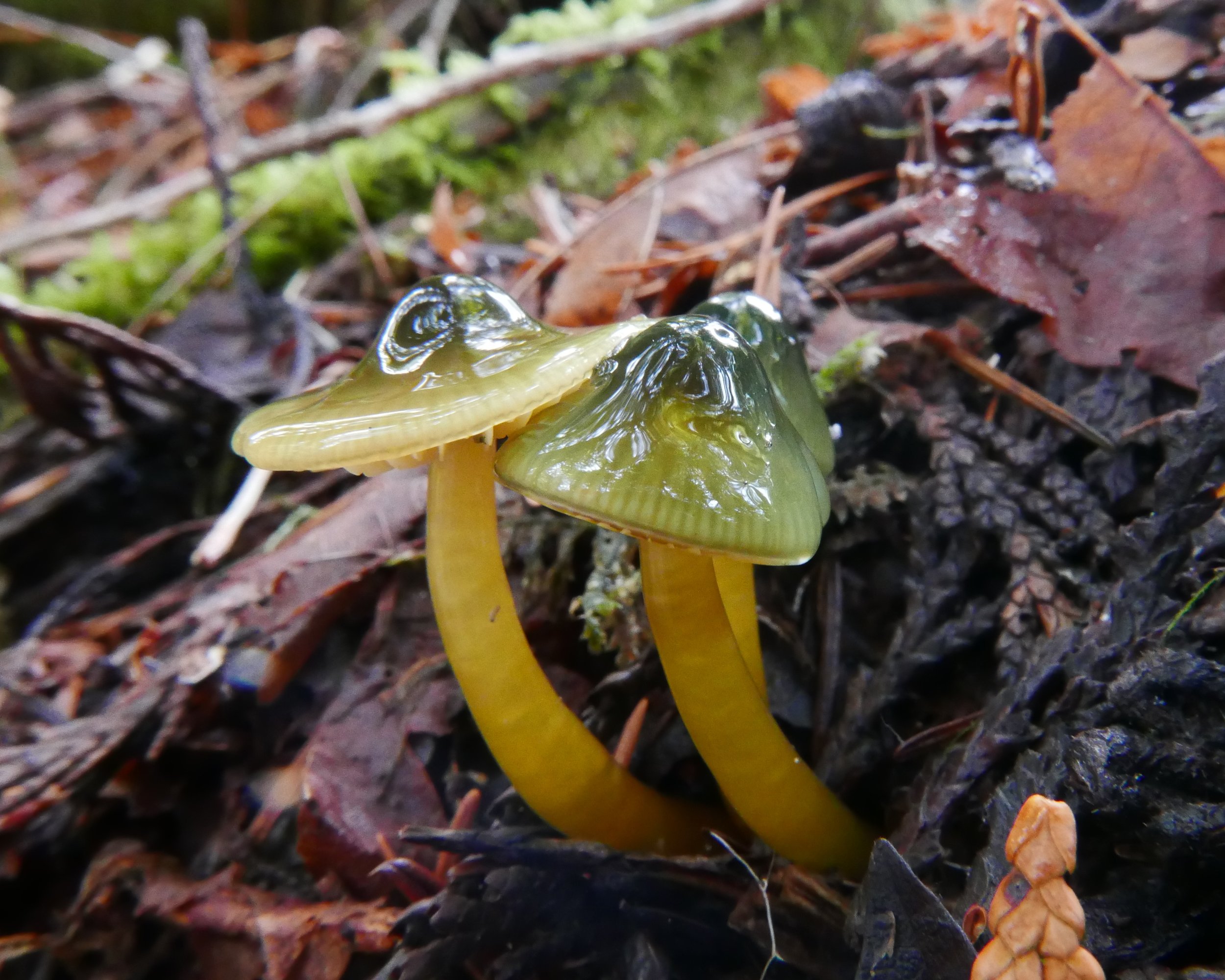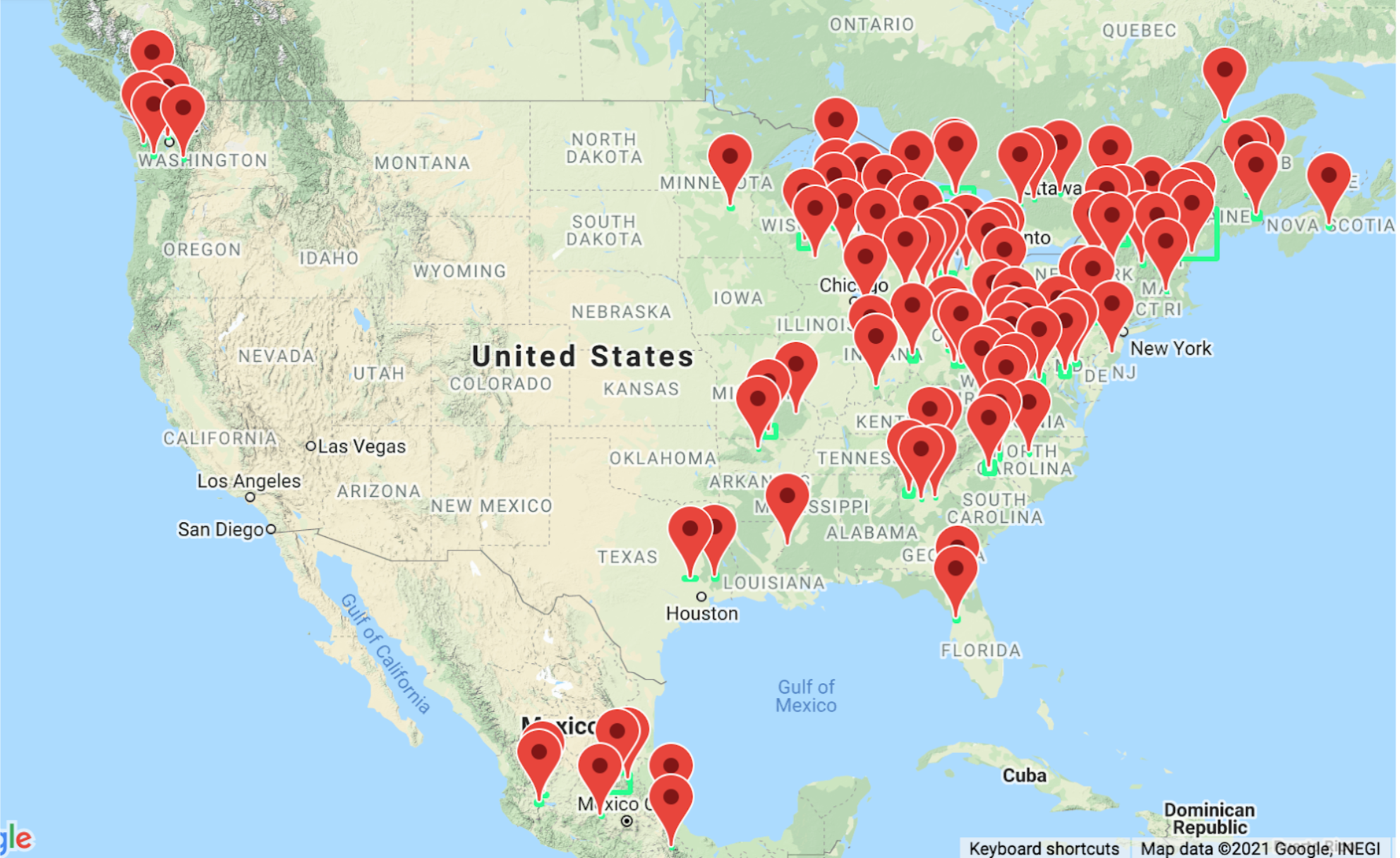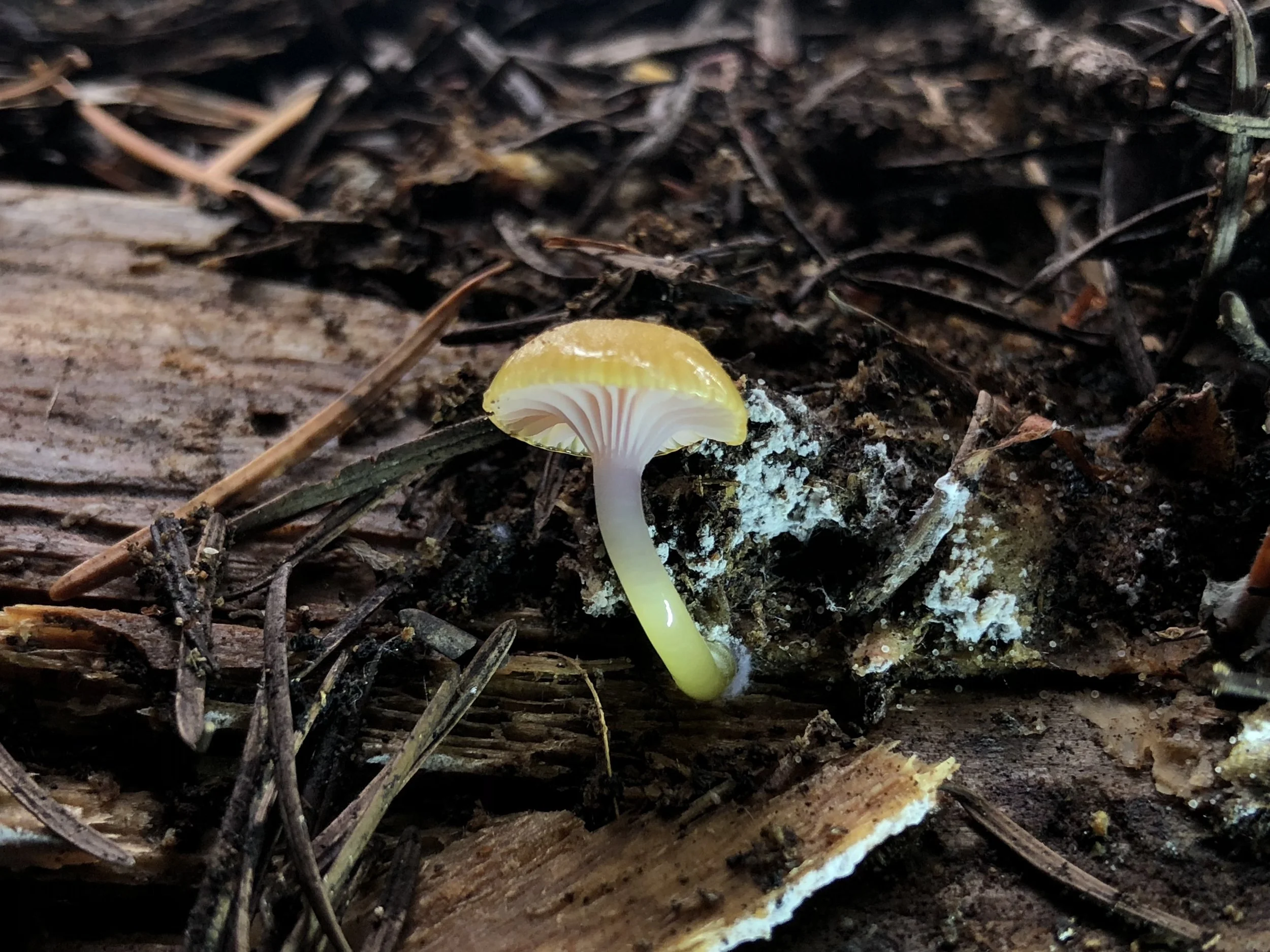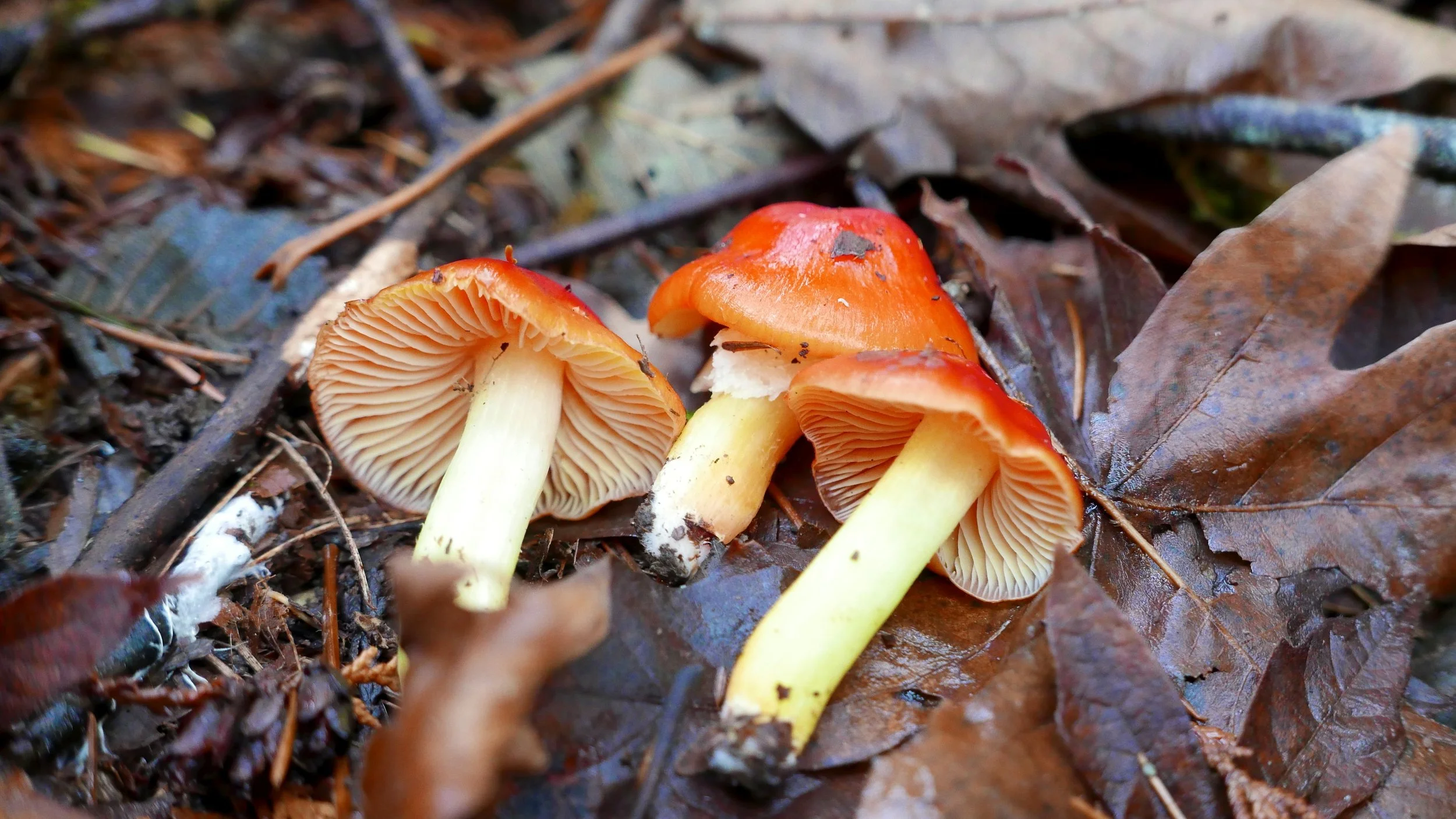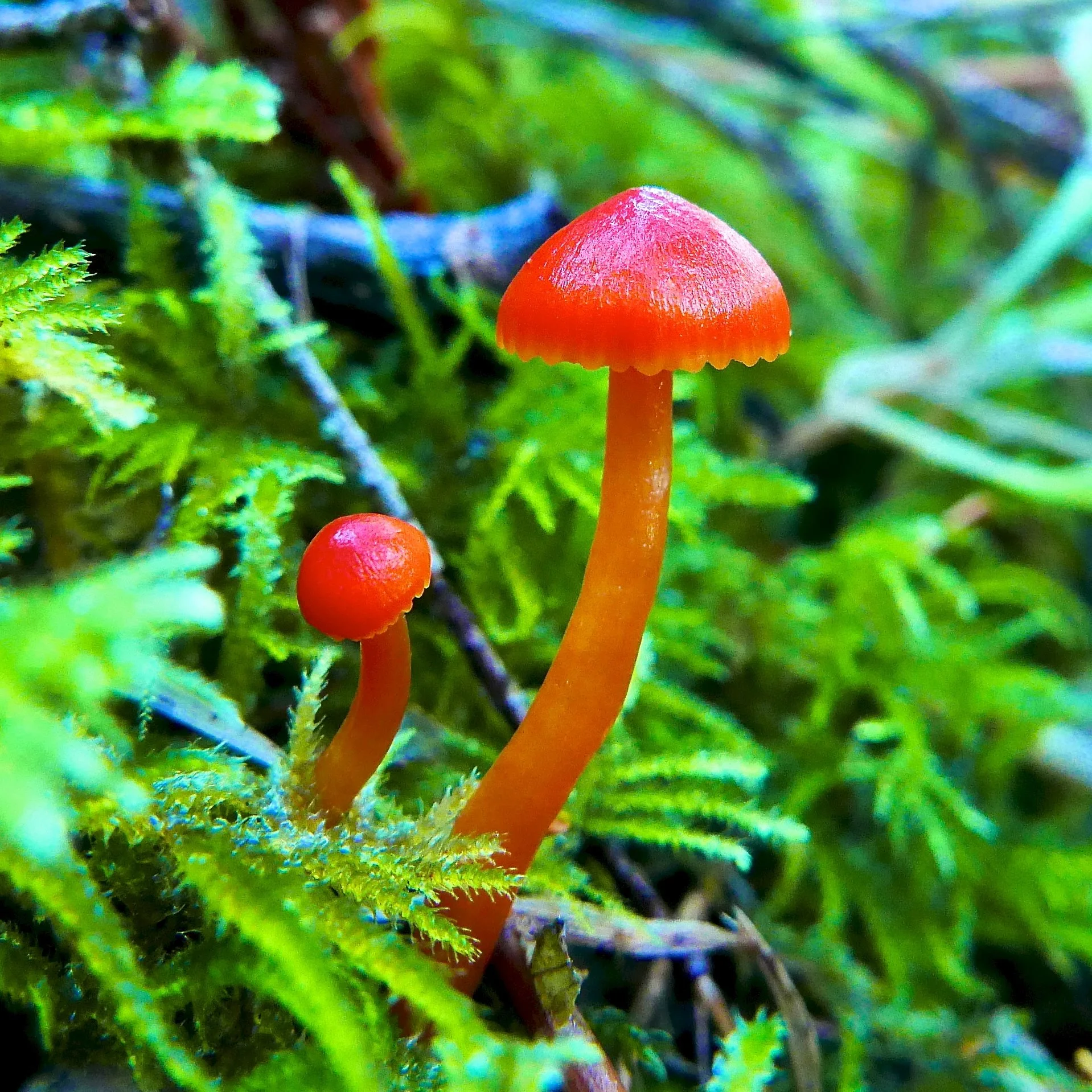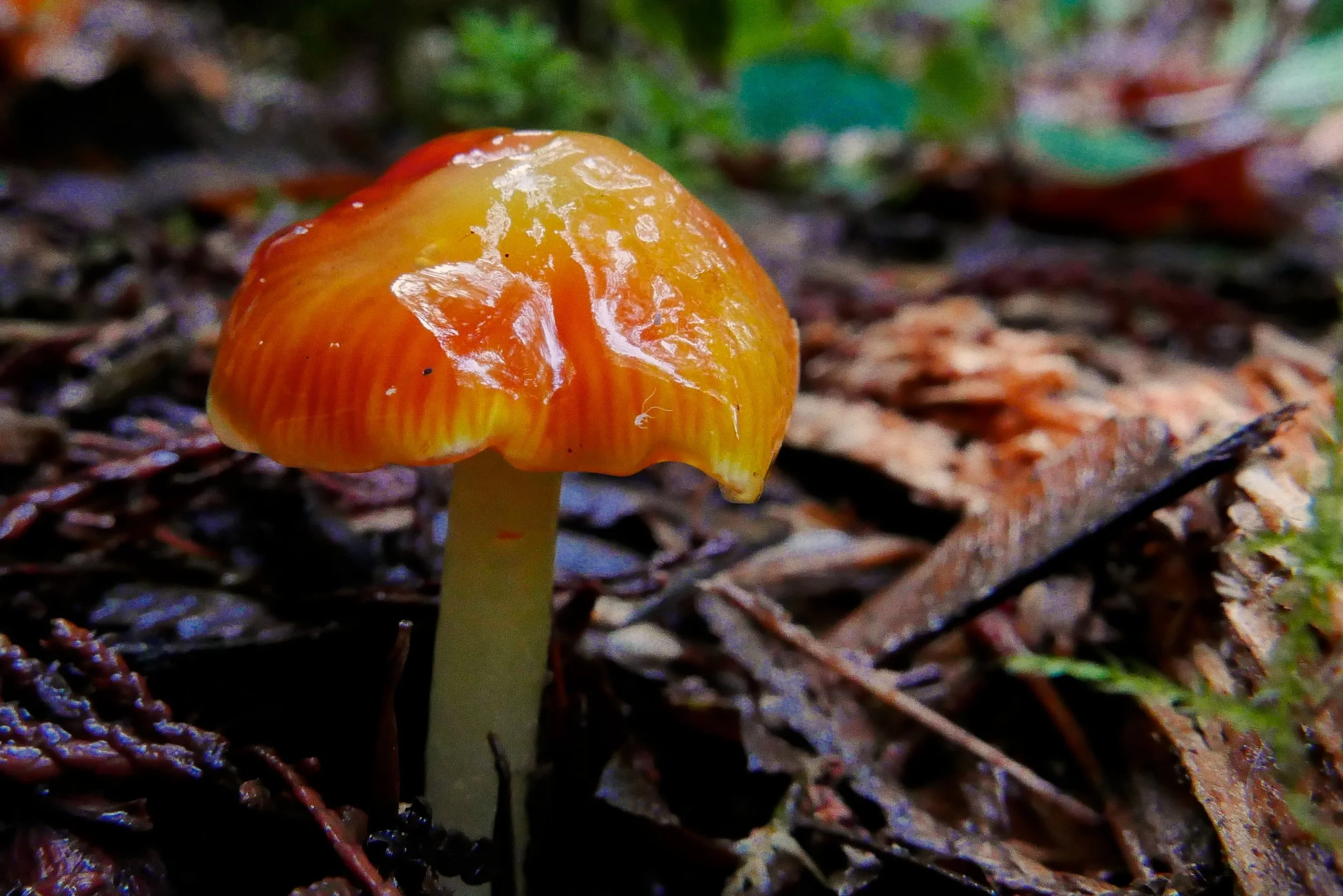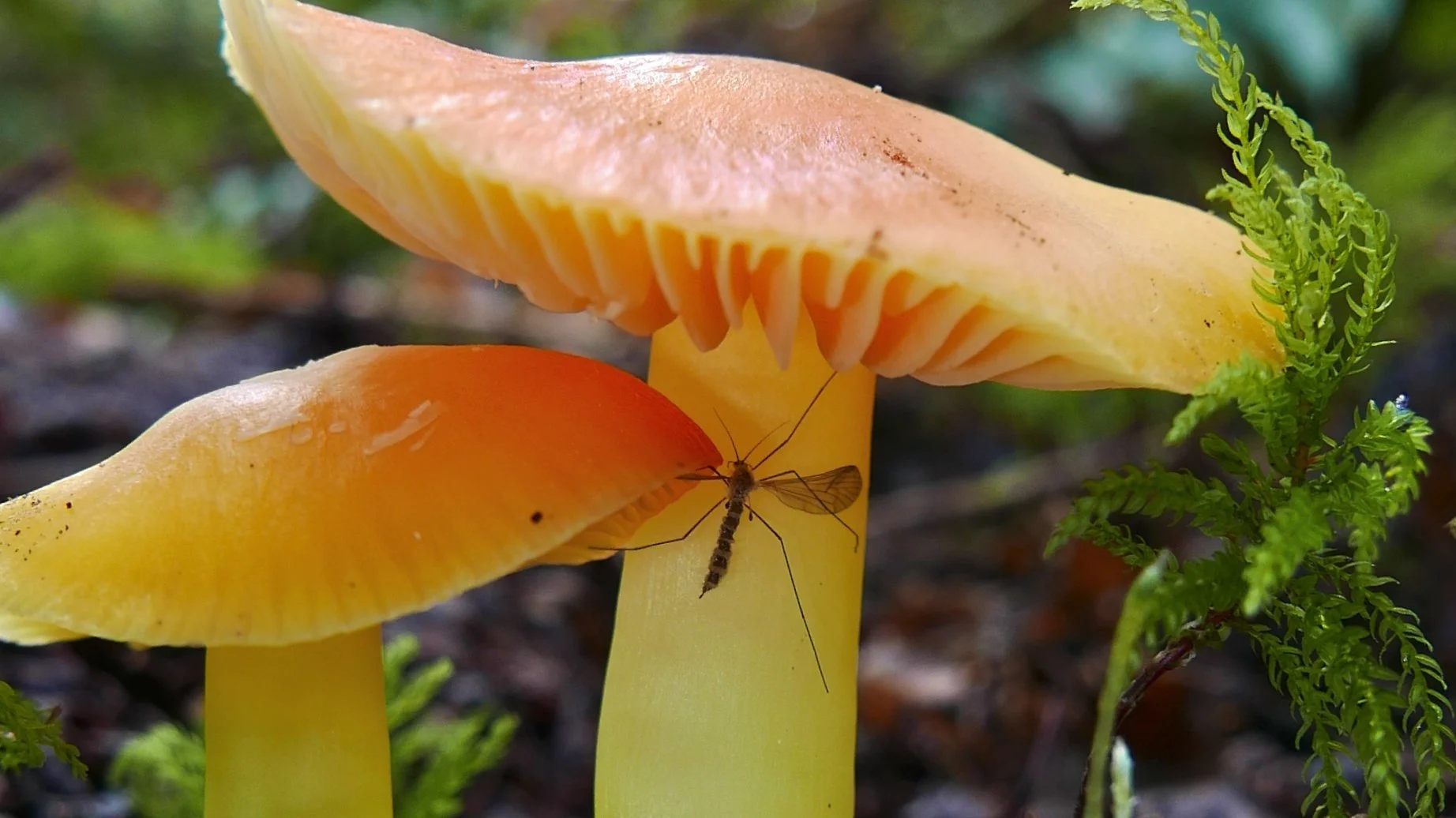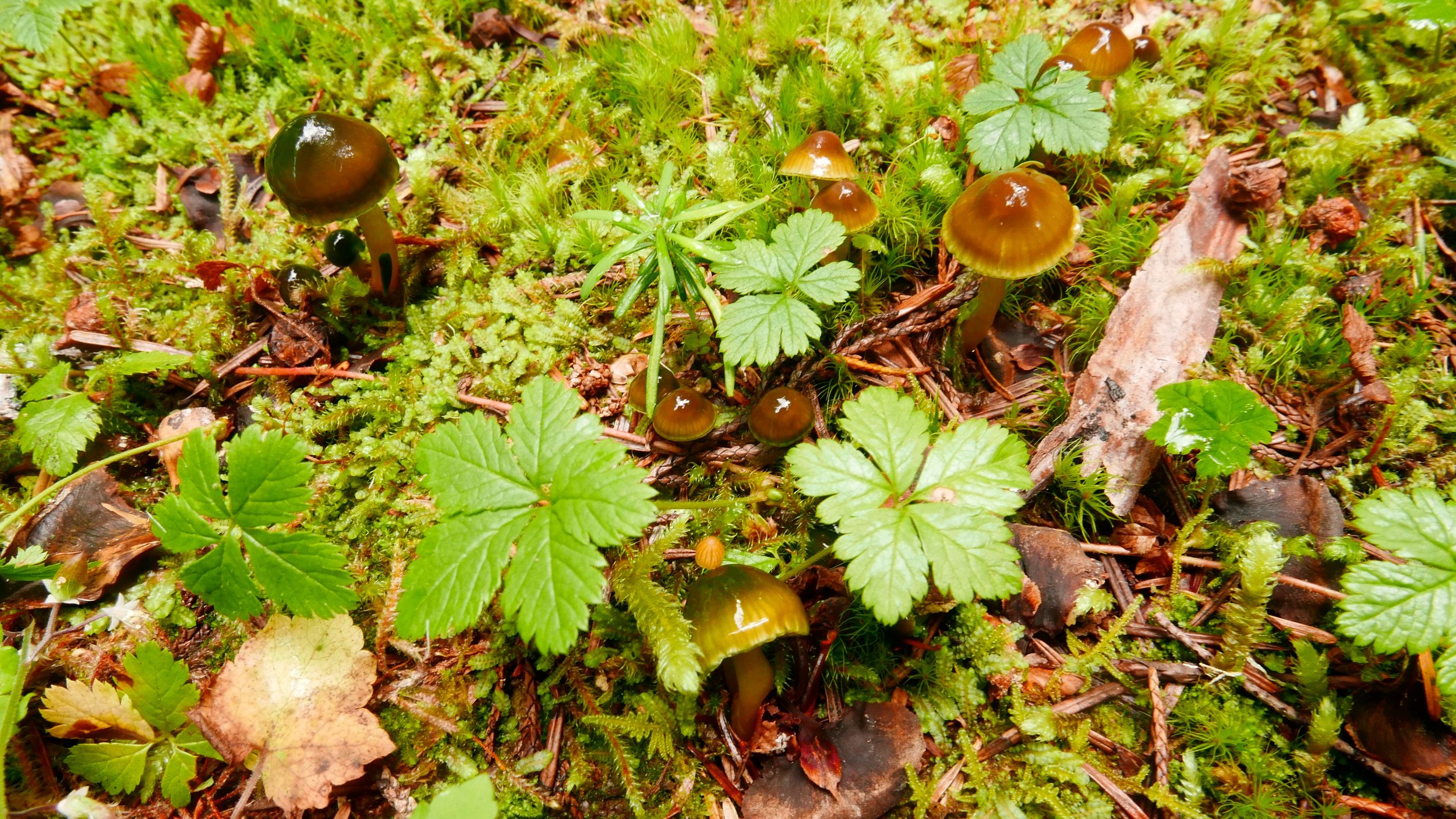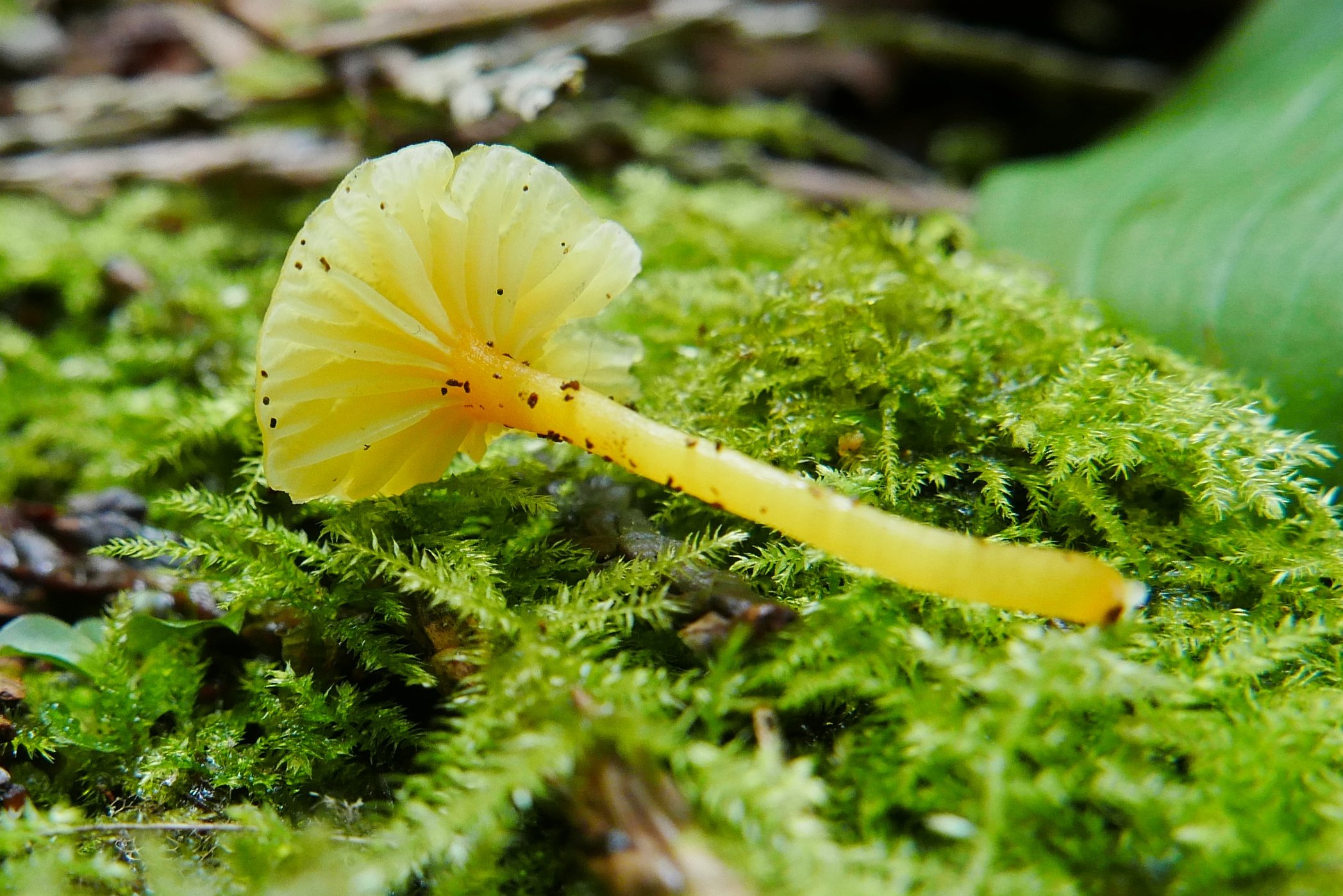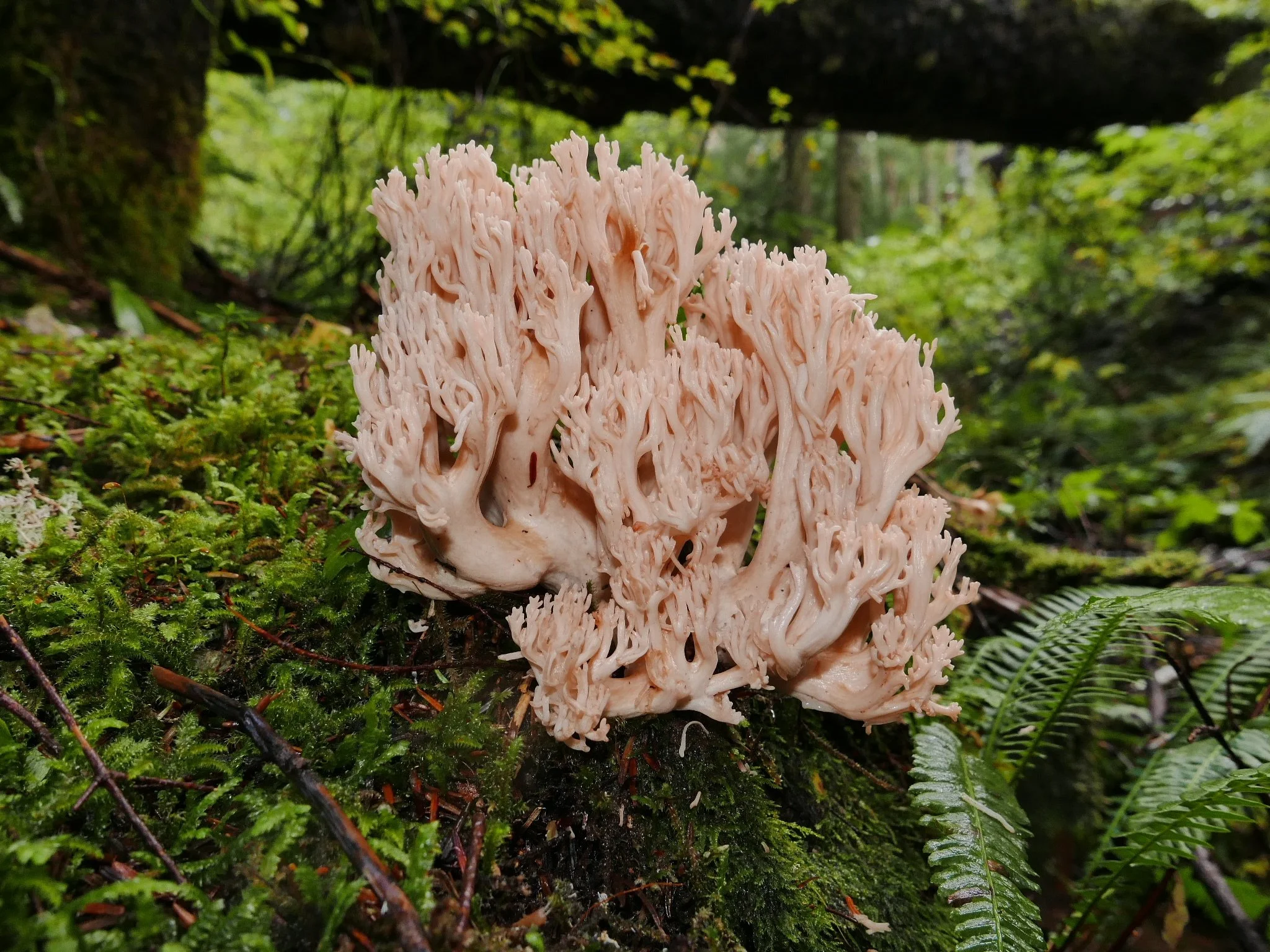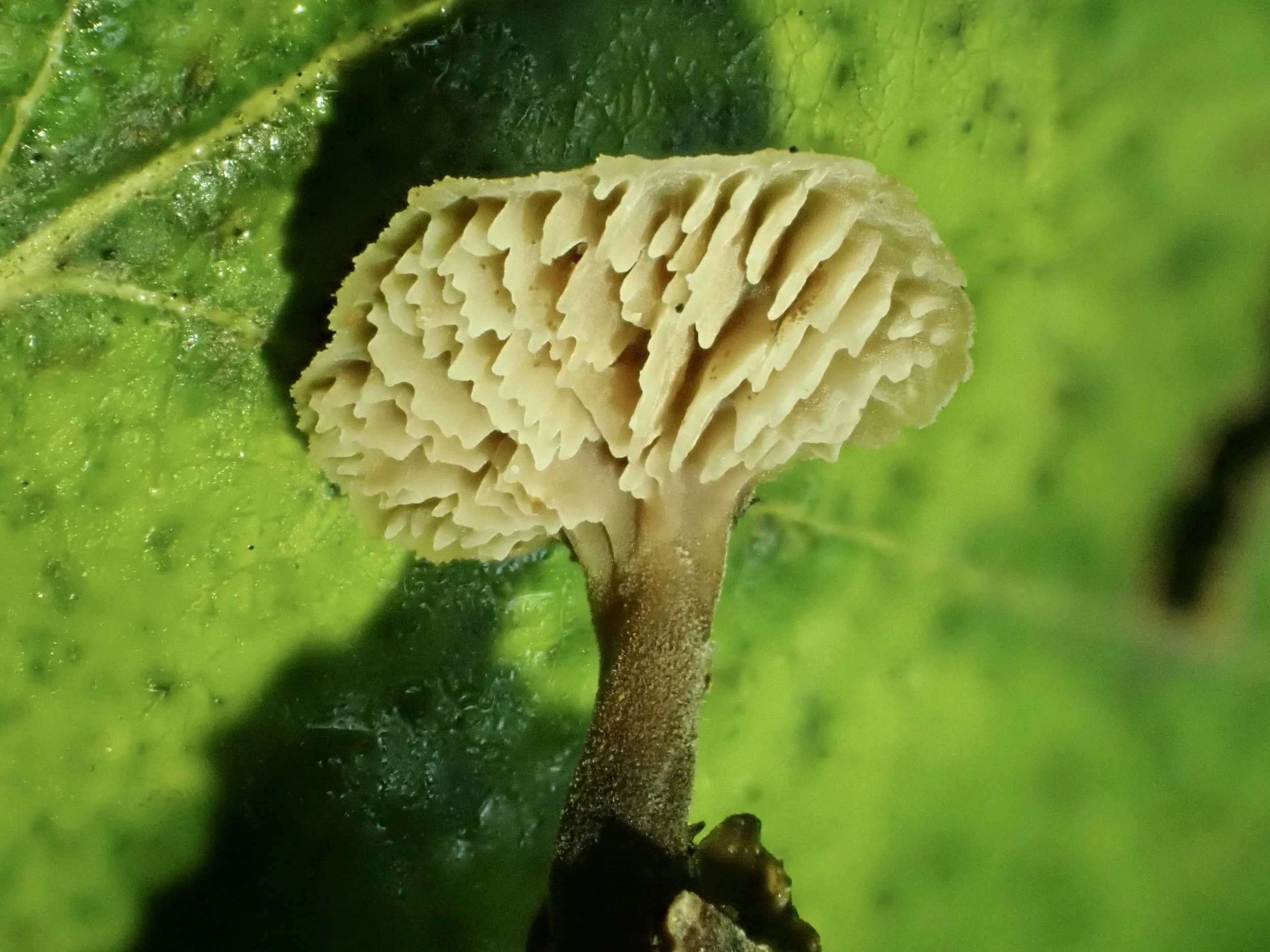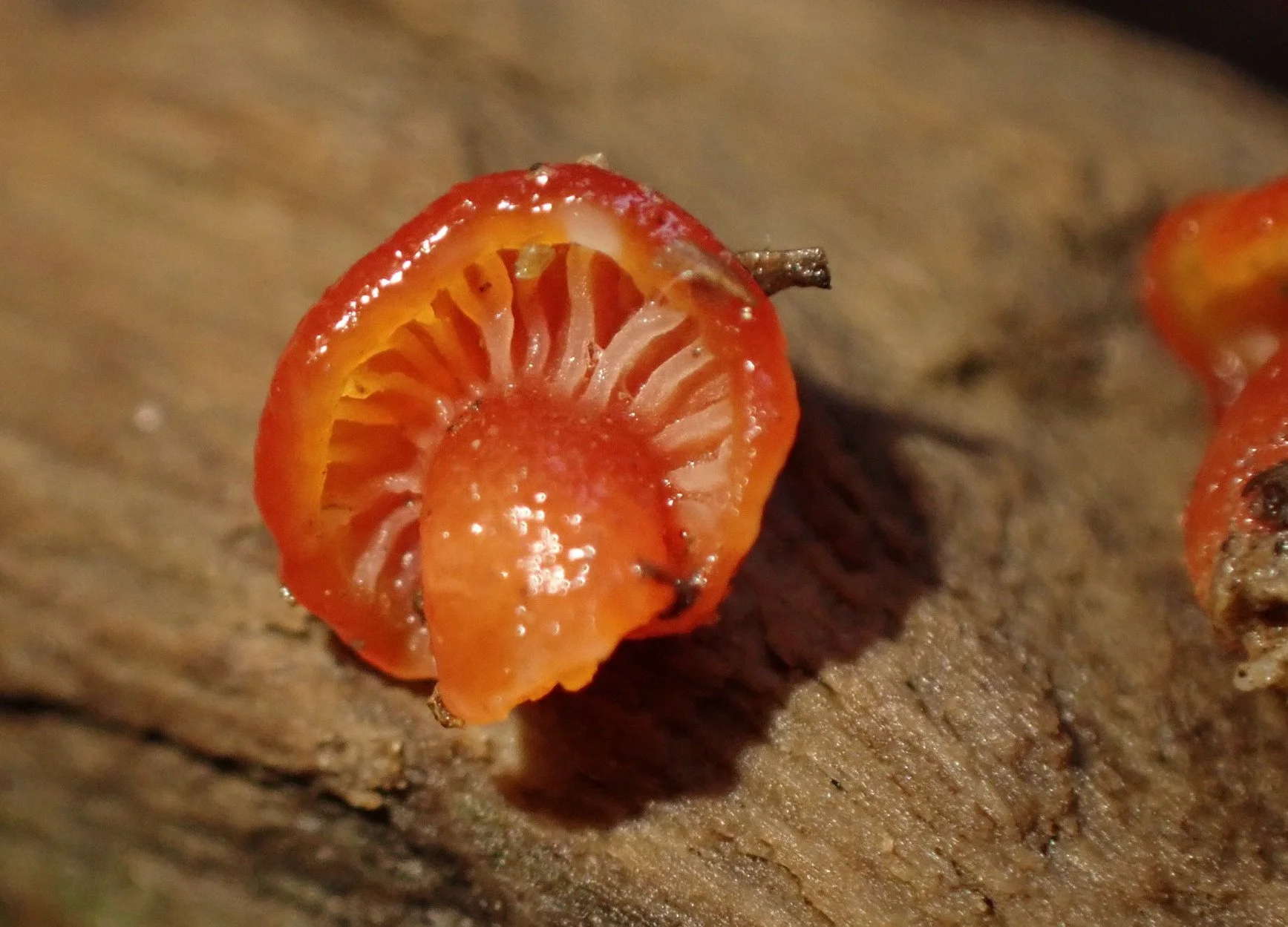How FUNDIS Sequencing Is Changing Taxonomy: Fungal Adventures in Washington State
Bill Sheehan’s vision of bringing sequencing to dedicated addicts of the world of fungi taxonomy will have lasting impacts. FUNDIS’s influence on the South Sound Mushroom Club (SSMC) near Puget Sound in Washington has been powerful, not just to our small group, but also to the scientific community -- especially for fungal taxonomy across the world.
FUNDIS brought together the colliding worlds of a new age: not just offering affordable high quality fungal sequencing, but bringing it to the community at a time when crowdsourcing exploded through iNaturalist and Mushroom Observer. This natural partnership was further enhanced by GPS and new phone apps that further tie the mycological community together. But, what are these real world results? What does the map reveal when all these new technologies come together?
In the big picture, recording sequenced observations to GenBank has improved a lot - though further improvements in format are worthy of consideration. GenBank is an open access sequence database of all publicly available DNA sequences and is used by both amateur and professional mycologists to identify sequenced collections. With the help of GenBank, the big picture of taxonomy is getting clearer and clearer as older and often misnamed entries now look glaringly wrong as they are surrounded by more high quality IDs. The good IDs, when confirmed by sequenced results, are a means of fact checking the community created “research grade” that iNat relies on. The Research Grade, while often correct, is mostly opinion based. However, sequence results can add a strong science based element in support of or rebuttal of the community opinion.
Occurrence Map for Hygrocybe cantharellus in North America on Mushroom Observer. Maps are available for all reported observations on both Mushroom Observer and iNaturalist.
If SSMC had one takeaway from lessons learned it might be that taxonomy is messy. Some of our results were just as expected before the confirmation through sequencing. Other results made us exclaim out loud. … I can still hear in my mind when I told SSMC mycology student Luca Hickey that a recent mushroom he sent in as a Hygrocybe came back as a Cuphophylus. “What!” To quote mycologist Jean Lodge on this one, “This is likely an unnamed species.” Luca also found and SSMC sequenced a Chromosera that will be used in a forthcoming paper with new species description.
Chromosera by Luca Hickey.
Luca is one of two students from Evergreen College who has benefited from FUNDIS sequencing grants in a big way. Lauren Ré, also a student finishing up at Evergreen, has joined the list of dedicated FUNDIS volunteers as the West Coast Rare Fungi Challenge Co-Leader and she is also now Chief Mycologist for SSMC. While these two Evergreen students have benefited from FUNDIS, SSMC has also benefited from their youthful exuberance and enthusiasm. The two students seem locked in a ping pong match of new fascinating discoveries.
Hygrocybe laetissima by Lauren Ré
While the SSMC has three active FUNDIS Projects, it is the Hygrophoraceae of Lower Puget Sound project that brought forth most of the early surprises. Not counting new stand-alone, unique sequences, two European species -- Hygrocybe substrangulata and Hygrocybe cf. phaeococcinea -- were sequenced by the SSMC for the first time in North America. Other sequences demonstrated huge range extensions. H. reidii extended from Eastern North America all the way to the far Northwest Coast. H. laetissima was thought to be found only in California on the West Coast, but was then found first by Lauren in Washington State. These sequence results were exciting enough, but on several instances the sequence matched nothing.
Sometimes, the sequence results that don’t have any DNA matches may morphologically resemble mushrooms from eastern North America or Europe. Often the sequence results suggest new species or at a minimum a new sister species. There are species that resemble European fungi, but have DNA that suggest that any evolutionary separation happened a long time ago and caused two populations to diverge into two species as they adapted to different habitats. In the PNW we laugh at the European common name for Gliophorus laetus - “Heath Waxcap”. Some of the mismatches include Hygrocybe aff. mucronella, H. aff. glutinipes, and H. aff. aurantiosplendes. There are many!
Hygrocybe aff. mucronella
Hygrocybe aff. glutinipes
Hygrocybe aff. aurantiospendens
The taxonomy messiness that occurs with this waxcap group is especially evident and interesting when looking at the Gliophorous psittacinus group from the Pacific Northwest. The first thing that became glaringly obvious in the initial Mycoflora Project (the original name used by FUNDIS) batch was that there were two G. psittacinus that were distinctly different morphologically as well as genetically. So the DNA results from this group suggested that not only did our G. psittancinus in the PNW have distinct DNA sequences but there was more than one species. Perhaps several! Three clearly identifiable species are G. psittacinus - green form, G. aff. psittacinus - “enigmatica”, and G. aff. psittacinus “olympica” (matches just one other that was found and sequenced from New York, per Jean Lodge). These are not just marginally distinct DNA - but as a group about a 10% mismatch - quite significant!
Gliophorus psittacinus -- green form in PNW
Gliophorus aff. psittacinus - 'enigmatica'
Gliophorus aff. psittacinus - ‘olympica’ (matches just one from NY State - a Jean Lodge sequenced mushroom).
But the real fun ones are those that look to be unique - those found only in our little corner of the world. My favorite is the Wonder Mountain Waxcap seen below. Originally found in Snow Basin near Wonder Mountain of the Olympic Mountains; Danny Miller (PSMS) has since sequenced another observation from the far NE corner of Washington State further validating this unique species possibility. Danny has captured and documented new, fascinating and at times the confusing mushrooms from the world of taxonomy coming out of the PNW as a result of sequencing. Danny generously shares his results with the world here.
Hygrocybe sp. from Wonder Mountain - Olympic NF.
Another fascinating Hygrocybe seems to be close to the H. parvula of the east coast, but looks to have two forms growing close to each other near Little Skookum in Washington State. These two forms are separated from one another by one unique DNA marker 9 bases long (CTTTTTTTC), which is missing in one of the two forms. The 9 bases are a single contiguous string known as an insertion/deletion or indel. While the DNA matches closely, one mushroom is red (this one one does not have the DNA marker of 9bp) and the other is yellow.
Red form Hygrocybe aff. parvula
Yellow form of Hygrocybe aff. parvula
My passion is with this group so I could droll on and on as there are many other new interesting discoveries here all made possible by FUNDIS and the contributions of a team of Community Naturalists from SSMC. SSMC also has two other FUNDIS projects that still remain active: the South Sound Fungal Diversity Survey and the Ramaria of Western Washington Project. The Ramaria Project was started by Melodie Gates and made successful by the tireless collecting by SSMC volunteer Mary McCallum. The big step forward here for science will be tying the DNA sequence results with quality pictures for Burke Herbarium. Here too are unique species that match nothing - yet. More work is needed.
Slightly pink Ramaria sp
It is our South Sound Fungal Diversity Survey that has seen the most active participation and been the most successful as a group project. There were few restrictions that SSMC placed on this Project and even our own rules kept being broken as it was impossible to say “no” to sequencing something that held promise of a potential new species -- or confirmation of a species in limbo. Just one example of a fascinating result is a Lentinellus found near Olympia by Lauren Ré. Sent in as a L. micheneri, but the sequence result suggests a closer relationship to L. tridentinus. The closest match is to a mushroom from France! Mycology experts who have looked closely at the sequence, and the exceptional close up pictures by Lauren, are confident this is an undescribed mushroom. A new species!
Lentinellus tridentinus by Lauren Ré
What name do you give to a really unique sequence that matches nothing we have yet seen in taxonomy? Another discovery of Lauren’s is a tiny red likely Hygrocybe where the sequence results raises more questions than providing much of a hint towards the evolutionary story of this fun mushroom. Lauren has given it the provisional name of Hygrocybe ‘thujarhiza’ and is doing further work through Evergreen to tease out more of the story.
Hygrocybe 'thujarhiza' by Lauren Ré
In conclusion, the number of people who have helped decipher the mysteries of PNW taxonomy would take pages to include. I do appreciate the efforts and expertise of everyone - a team effort for sure! Besides those already mentioned, how do I not include Kathleen, Jeanette, Kitty, Conor, Regina, Eric and Jen and so many others for such quality samples and help? Two people, though, do require additional special mention. Both Jean Lodge of FUNDIS and Danny Miller of the Puget Sound Mycological Society have never failed to answer a question when we have struggled with an ID. Both are not only geniuses in the mysterious world of sequencing, but tireless in their support. Their patience is daunting; their friendship, treasured. Thank you all! And finally, it would be criminal not to mention the support given to those interested in sequencing by the Board of SSMC. Their support has been phenomenal and the three Projects never went for want - be it financial or moral support.
It is such a fascinating journey discovering just the tiniest bit of knowledge from that under-the-ground world that now and then shows itself as a mushroom. This journey has certainly been enhanced by those connections of people -- not just in our own club -- but throughout the world of mycology. Science will be the long term winner thanks to FUNDIS. Is evolutionary taxonomy revelations the only winner? Absolutely NOT. This is but a tiniest piece of understanding what DNA can add to our knowledge base of that mysterious underground world. So much more to come!

